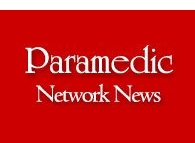Treat and Refer or Treat and Abandon??
How many of us during our EMS careers have attended patients that either didn’t want to or didn’t need to be transported
to a hospital? How many of us left those scenes wondering what would or could happen to those patients? How many of us have “encouraged†patients to not be transported to a hospital to avoid long hallway wait times (be honest now!)? What is the risk to ourselves, our profession and our organizations of these practices? I would argue that it is substantial and that it is past time that we deal with this demographic of patients in a more responsible manner.
The triad of international reports recently released (UK, Canada, USA) all speak, to varying degrees, about EMS evolving as mobile healthcare. It is time for us to move from our “homing pigeon†practices and begin to actually recognize and celebrate our contributions to the overall health care system. The impact will be significant! Imagine – EMS as part of a network that would see field crews actually referring patients to resources within health – home care, mental health, non-urgent clinics OR to resources typically located in the municipal or provincial realm – social services, shelters, not-for-profit agencies. Now wouldn’t we all sleep better at night with access to these tools to actually get these patients the care and resources that they truly need – which in all likelihood is not EMS! We are simply the default response when people don’t know where else to turn and by ineffectively managing this demographic of patients, I would argue that we are contributing to ER overcrowding. This, however, is not entirely our fault as we have either not been provided with, or sought out the appropriate networks to manage these patients when WE don’t know where else to turn!
For years, EMS has been searching for its rightful home in the world. Perhaps in all of our “rock turning†we have overlooked that we are exactly where we need to be. Strategies to ensure the management of our non-critical patients can only serve to further solidify this position between health and public safety. We must stop considering this position as a point in the journey and recognize that it is a sustainable and realistic environment in which to find ourselves.
Darren Sandbeck M.A., REMT-P
EMS District Manager/Special Projects
Peace Country Health EMS
Grande Prairie, Alberta
Comments: editor@Paramedic-Network-News.com

